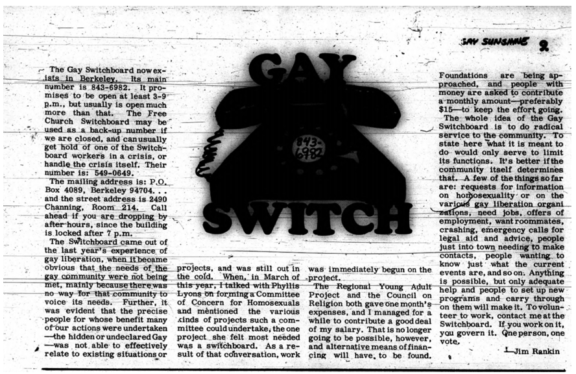The Gay Switchboard served the East Bay community from 1970 to 1977. A direct outgrowth of the previous year, it was a mechanism of mutual aid, offering direct, confidential assistance. Many states around the country also had switchboards, and this was especially useful for closeted gays who were not active, out members of the community. “The community itself [had] to determine” the different ways in which it could function. The Switchboard exemplifies the increasing need for immediate, direct assistance, and the community’s commitment to helping each other instead of waiting for something to come along for them.


These two images are from the August-September 1970 issue of Gay Sunshine. Both indicate an enormous expansion of community discourse regarding police following Frank Bartley’s murder, which necessitated community-wide education on how to survive police discrimination. Both sources outline the various actions possible, making it clear how only one action is typically not enough; contribution is needed from several directions. The second source has five comprehensive conditions in which one may find themself, increasing its accessibility and usefulness.
